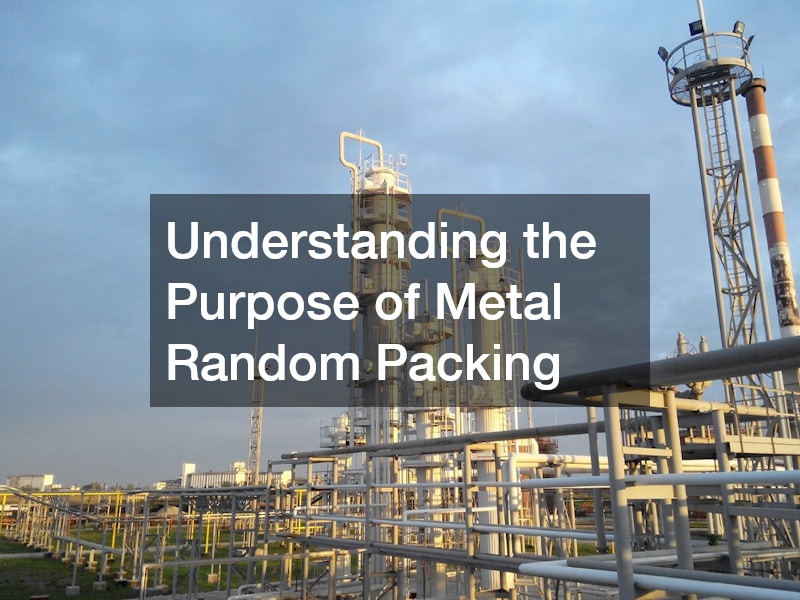Metal random packing is a crucial component in various industrial processes due to its ability to enhance efficiency and performance. Its applications span across numerous sectors where fluid dynamics and separation processes are pivotal.
What is Metal Random Packing?
Definition and Types
Metal random packing refers to small, irregularly shaped pieces of metal used in filling columns to promote mixing and enhance mass transfer. These packings come in different forms, such as Pall rings, Raschig rings, and saddle packings, each tailored for specific operational needs.
Each type of metal random packing offers unique benefits such as improved surface area for contact and resistance to fouling. The selection of a specific type often depends on the specific process requirements and operational conditions. Despite their differences, all metal random packing types share the common goal of optimizing contact between liquid and vapor phases to facilitate critical process operations.
Historical Development
From its inception in the early 20th century, metal random packing has undergone significant evolution driven by technological advancements and changing industrial demands. The milestones in its development have been marked by constant improvements in design and material selection to enhance effectiveness. The initial designs focused on simplicity with basic shapes, but over time, innovation led to more complex geometries that improved performance. This historical advancement reflects an ongoing commitment to advancing industrial processing technology. Continuous research and development efforts have allowed metal random packing to remain a preferred choice in modern industries, adapting to the ever-evolving needs of complex processes.
How Does Metal Random Packing Work?
Basic Principles of Operation
Metal random packing operates on the principle of providing a large surface area within towers or columns to facilitate phase contact. This is essential in processes such as distillation, absorption, and stripping. By maximizing the contact area between the liquid and gas phases, metal random packing improves mass and heat transfer rates. This enhances separation processes, leading to more efficient operation overall. The effectiveness of these packings is largely dependent on their proper installation and maintenance, ensuring optimal functioning throughout their service life.
Mechanisms Involved
The structure of metal random packing allows for improved liquid distribution and gas flow, minimizing channeling and promoting uniform phase mixing. These mechanisms are fundamental for achieving the desired separation or reaction outcomes. As fluids pass through the packed column, the packings create turbulence, which enhances interphase contact and increases the potential for mass transfer. This is crucial in achieving the high efficiency demanded by industrial applications. The robust metal construction of these packings ensures they are durable under varying temperature and pressure conditions, making them suitable for diverse environments.
What are the Benefits of Using Metal Random Packing?
Efficiency and Performance
Metal random packing provides enhanced efficiency in separation processes by optimizing mass and energy transfer. High surface area and low pressure drop characteristics make them advantageous in reducing operational costs. In industrial applications, achieving the desired separation speed and purity is essential, and metal random packing contributes significantly towards these objectives. Their design facilitates efficient contact between phases, enhancing overall process effectiveness. The performance improvements can lead to reduced energy usage, contributing towards more sustainable industrial operations.
Cost-Effectiveness and Durability
While initial costs may be higher, metal random packing offers long-term cost savings through its durable nature and efficiency improvements. The material’s inherent strength ensures it maintains performance over extended periods. Compared to alternatives like plastic or ceramic packings, metal packings are capable of withstanding high temperatures and corrosive environments. This durability decreases maintenance needs and operational downtime. By investing in metal random packing, industries can achieve a balance between upfront costs and ongoing savings, ensuring a favorable return on investment.
Where is Metal Random Packing Commonly Used?
Industrial Applications
Metal random packing is a staple component in the chemical, petrochemical, and gas industries, where efficient contact between liquid and vapor phases is necessary. It is particularly essential in processes such as distillation, absorption, and stripping. These packings are also widely utilized in water treatment facilities, where their efficiency in phase separation is harnessed to enhance purification processes. Their versatility is further demonstrated in pharmaceutical manufacturing, contributing to the consistency and quality of products. Across these sectors, the key advantage of employing metal random packing is its ability to operate efficiently under diverse conditions, meeting various industrial requirements.
Case Studies and Examples
In one chemical plant case study, the replacement of traditional packing with metal random packing led to a 15% increase in operational efficiency. This was attributed to the enhanced surface area and improved fluid dynamics provided by the metal packing design. Another example can be seen in the manufacturing sector, where metal random packing enabled greater product purity during distillation processes, resulting in higher-quality outputs. This case underscores the value of metal random packing in precision-dependent industries. These examples highlight the transformative impact of metal random packing, significantly improving processes’ effectiveness across various sectors.
What Factors Should Be Considered When Choosing Metal Random Packing?
Material Selection Criteria
The choice of material for metal random packing is critical and should be based on compatibility with the chemical environment and process temperature conditions. Stainless steel and other alloys are common due to their robust and corrosion-resistant properties. Industries must also consider the packing’s resistance to mechanical stress and its ability to maintain performance under varying operational pressures. This ensures longevity and sustained efficiency. Choosing the right material can prevent potential structural failures and downtime, leading to a more reliable and cost-effective production cycle.
Design and Compatibility
Design considerations for metal random packing should include factors such as size, shape, and surface area, all of which significantly affect performance metrics. Proper design ensures optimal fluid distribution and phase contact within the column. Compatibility with existing systems and processes is also pivotal when selecting packings. Ensuring seamless integration minimizes disruptions and enhances operational efficacy. Ultimately, the right design and compatibility choice will optimize the function and efficiency of the entire processing system.
.


